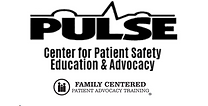HOW TAKE CHARGE: 5 STEPS TO SAFER HEALTH CARE BENEFITS PERSONS WITH BREAST CANCER
- ilene Corina

- Oct 13, 2022
- 3 min read
Updated: Jul 18

HOW TAKE CHARGE: 5 STEPS TO SAFER HEALTH CARE BENEFITS PERSONS WITH BREAST CANCER www.TakeCHARGE.care By Donalee Thomas According to the National Cancer Institute, in 2021 more than 280,000 women in the United States would be diagnosed with breast cancer and some 43,600 would be expected to die of the disease. In addition, an estimated 2,650 men were expected to be diagnosed with breast cancer and 530 were expected to die of the disease.1 The TakeCHARGE Campaign’s “5 Steps to Safer Health Care” are directly relevant to any patient receiving treatment for breast cancer: Step 1: Understand and Complete Your Advance Directives Understanding and completing your Advance Directives — specifically the healthcare proxy — and choosing a surrogate decision-maker is important, especially when you have a chronic disease such as breast cancer. The health care proxy form allows you to designate, in writing, a person who will express your values and desires related to your medical care when you are unable to make or communicate those important decisions. You can adjust your wishes or the person you choose to make decisions for you if you can’t speak for yourself as your situation changes because of either new information or a change in your health.2 Step 2: Keep a Record of Your Medical History and Current Medications Your medical history helps a clinician understand the whole picture of you as a patient, especially when you’re seeing a care provider for the first time, or when you see multiple providers. It provides a truer picture of your long-term health. Medication lists are important in that most medical practices will ask for a copy of this list when you sign on as a new patient. It’s a good idea to keep an up-to-date list handy (maybe on the refrigerator door) for emergencies; place a copy in your wallet or pocketbook, and give copies to family members.3 Step 3: Prepare for Doctor Visits/Make a List of Questions It is always important to be prepared when visiting your physician. Facing a diagnosis of breast cancer can be a stressful experience for patients.4 Preparing a list of questions ahead of time will make your visit more productive. Step 4: Prevent Infections/Ask Caregivers to Wash Their Hands Hand hygiene is the number one way to prevent the spread of germs and to prevent infections. Ensuring doctors, nurses and other staff have clean hands is critical to prevent the spread of illness. If you are to receive chemotherapy, your white blood count may be low and your body may not be able to fight off an infection. An infection during chemotherapy can lead to death.5 Patients and families are encouraged to speak up and ask health care providers if they washed their hands prior to entering the patient’s room and before touching the patient.6 Step 5: Use an Advocate/Be an Advocate for Others A patient advocate helps to guide a patient through the healthcare system, especially through the screening, diagnosis, treatment, and follow-up of a medical condition such as cancer.7 Patient advocacy helps give patients a voice in their own medical care and keeps them informed about the treatments and procedures provided. Patient advocates can help to explain all that happens on the patient’s behalf. They also can help have their questions answered, and assist in walking them through potential treatment plans. 1. https://www.aacr.org/patients-caregivers/awareness-months/breast-cancer-awareness-month/ 2. https://www.nia.nih.gov/health/advance-care-planning-health-care-directives 3. https://www.jointcommission.org/resources/for-consumers/take-charge/keep-a-record-of-your-medical-history-and-current-medications 4. https://content.steward.org/sites/default/files/SEMC-Preparing-for-Breast-Surgeon.pdf 5. https://www.cdc.gov/cancer/preventinfections/symptoms.htm 6. https://www.hopkinsmedicine.org/patient_safety/infection_prevention/hand_hygiene.html 7. https://www.cancer.gov/publications/dictionaries/cancer-terms/def/patient-advocate




Comments